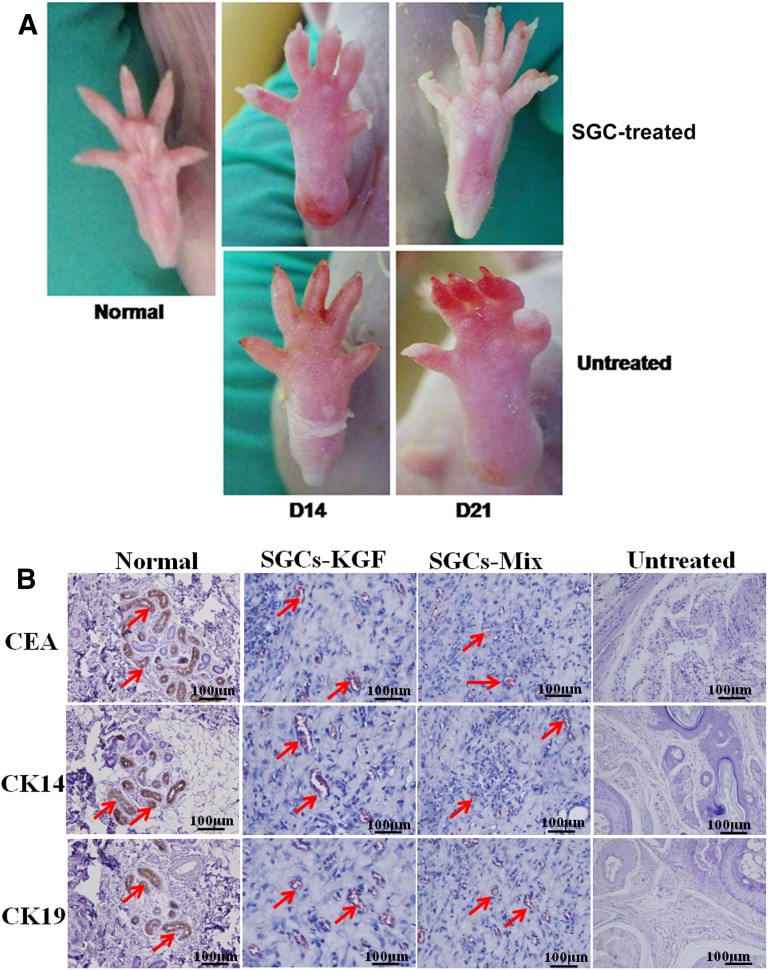Figure 7.
Effect of SGCs treatment on burned paws of a severe combined immunodeficiency (SCID) mouse model. The paws of SCID mice were injured by thermal hazards and then treated with SGCs differentiated from mesenchymal stem cells derived from human umbilical cord Wharton’s jelly at a concentration of 1 × 105 cells per 0.2 ml per paw or 0.2 ml of PBS (control). At 14 days after treatment, the paw skin in the control group was seriously peeled away from tissues, but not in the SGC-treated group. The paw skin in the SGC-treated group could accelerate the velocity of healing compared with untreated group. At 21 days after treatment, the SGC-treated group had regenerated new skin in the paws, whereas the untreated control had not. The sweat gland (SG) formation was examined by immunohistochemical (IHC) analysis with the SG markers carcinoembryonic antigen (CEA), CK14, and CK19. The results showed that the SGC-treated group (SGC-KGF, SGC-mix) formed SG-like structures with positive staining for the three SG markers, like natural paw shin. In the untreated group, no SG regeneration was observed and IHC staining results were negative with all three SG markers. Scale bars =100 μm. Abbreviation: SGC, sweat gland-like cell.

